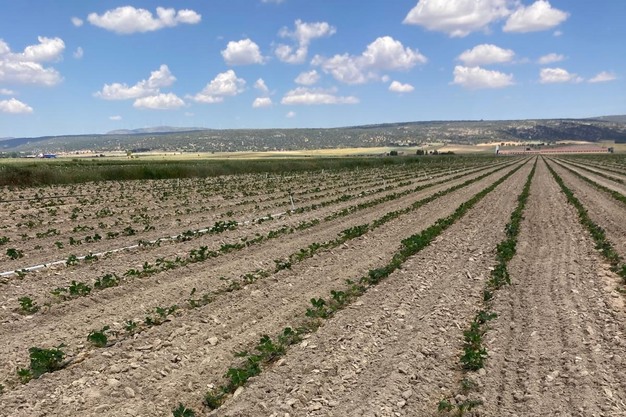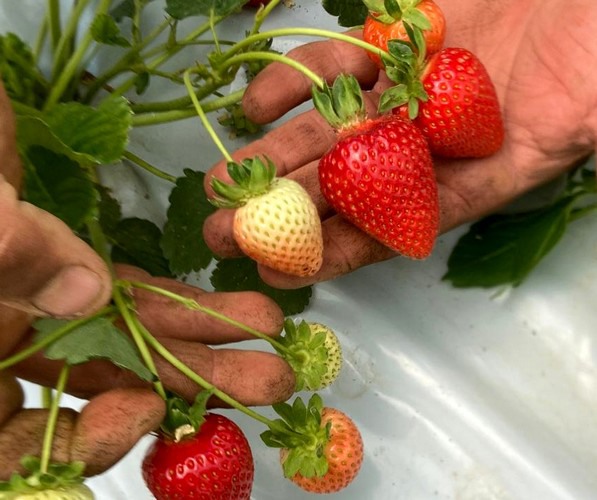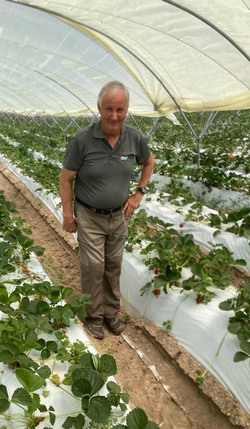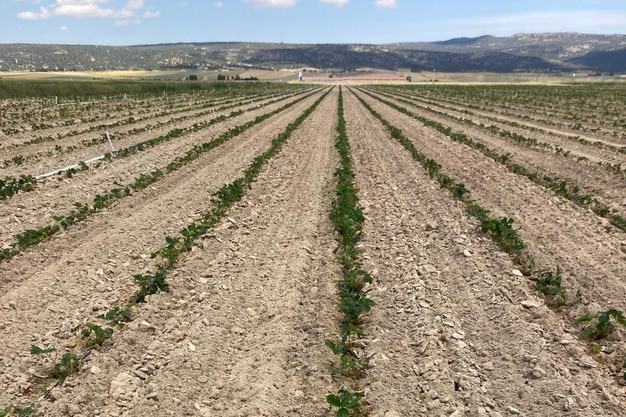By the end of May, the strawberry harvest comes to a close in the Spanish province of Huelva, yet the Spanish production continues in the region of Castile-Leon, the source of the seedlings that make the Andalusian campaign possible each year.

"We are now starting to harvest strawberries in the Amblés Valley, Spain's coldest arable valley, located about 14 km from Avila, and we are doing it about two weeks later than last year," says Carmelo González, of Viveros Gardisancho, a berry propagator since 2007. "Just as Huelva finishes, we begin, and we end in mid/late November, when the south starts again."
"We produce different varieties at our nursery; the ones demanded by Huelva. Last year, we were growing plants of 24 varieties. That's a lot, but still fewer than other years, because we see that more are being discarded each year. However, for strawberry production, we have opted for two that yield very good results: Rika, from Fresas Nuevos Materiales, and Plared 15105, from Planasa."

"Both produce very good fruit, with a perfect balance between sweet and sour and a great aroma. The Rika, in particular, is spectacular, but it yields a smaller fruit, so it was discarded in Huelva; however, here in Ávila, we produce strawberries associated with cold areas, where fruits are not as large, so it works very well."
The strawberries from Castile-Leon hit the market at the peak of the summer fruit campaigns. "We have to compete with many other products and countries, but we have our niche and, besides serving the domestic market, we do quite a bit of exporting to France," says Carmelo.
"We are looking for new tools and techniques to address soil disinfection" While its strawberry production is not that large (close to 3,000 tons in 2022), Castile-Leon stands out as the leading autonomous region in Spain in the production of strawberry mother plants, which it markets in the European Union, the Mediterranean arc and even overseas. A significant portion of the production is intended for the more than 6,000 hectares planted annually in Andalusia.
While its strawberry production is not that large (close to 3,000 tons in 2022), Castile-Leon stands out as the leading autonomous region in Spain in the production of strawberry mother plants, which it markets in the European Union, the Mediterranean arc and even overseas. A significant portion of the production is intended for the more than 6,000 hectares planted annually in Andalusia.
In Spain, both mother plant and strawberry producers are having to adapt to the restrictions to the access to active substances authorized for the necessary soil disinfection.
"The plants from Ávila have always grown vigorously in Huelva, but at the moment, the disinfections carried out both here and there are not the best. For that reason, we are looking for new tools and techniques to address the lack of solutions; and one of them, which has helped us a lot to prevent the spread of diseases, is the use of drip irrigation instead of sprinkler irrigation," he says.
"Regardless of such issues, we are producing a very good plant. The problem I've been seeing in these years of high heat and water scarcity is that, in general, the mother plants are uprooted a bit too early. We plant producers often advise waiting a bit to avoid problems due to high temperatures in the south, but each campaign in Huelva always generates a lot of anticipation and there's eagerness to start as early as possible."

For more information:
Gardisancho, S.L.
C/ Reguerillo, 1
5191 Niharra, Ávila. Spain
